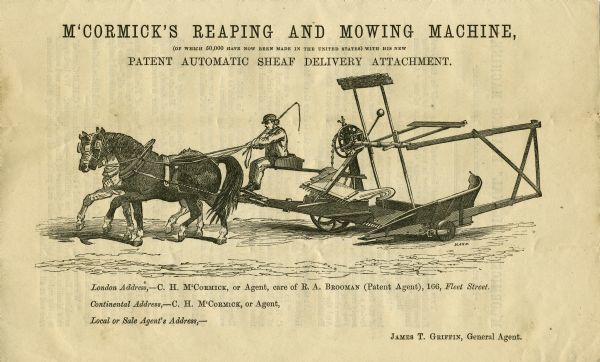Transition from Agriculture to Floriculture
The transition from large scale agriculture to less practical floriculture was not just a movement in Bloomington - it was seemingly national or more, albeait at slightly different times. This transition was brought along by advancements in transportation, like the train, and advancments in farming technology. Some of these new farming technologies are Cyrus McCormick's mechanical reapers (1834) and a new steel-bladed plow manufactured by John Deere also in the mid-1800s. These new inventions allowed farmers to farm additional land more efficiently and increase their crop yield which meant that fewer farmers were needed to get the same amount of crops. With the expanding usage of the train, these crops could be transported further and faster than ever before. Since there was less need for every family to farm their own foods, especially weathier families, they were able to utilise that same space for growing something different for an entirely different reason - flowers and plants for aesthetic purposes. Families who no longer needed to grow their own food were sometimes able to spend their money on unessential goods like seeds, plants, and flowers to grow on their own land or to decorate their homes.
This idea of unessential gardening began as early as the late 1700s among the east coast weathier classes who were influenced by media, such as horticultural magazines, that were imported from England. These magazines that described elaborate royal gardens from England and other European countries were reprinted and destributed througout America. The Seed Drill (1901) written by Jethro Tull was one such horticultural magazine that we know of today. As these magazines were distributed among the classes, some tried to emulate these garden plans with native plants. People were not limited to native plants, though. Plants could be transported from visits to other parts of the United States or even outside of the country. These native and nonnative plants could be transported and traded in seed form, which there are records of the Wylie Family doing. Additionally, the Massachusetts Horticultural Society was formed in 1829 and is the oldest organized horticultural institution in the United States. It focused on sharing local flowers and produce at its beginning and was free to the public to visit. Futhur societies like it may have been formed off its model or influence.


